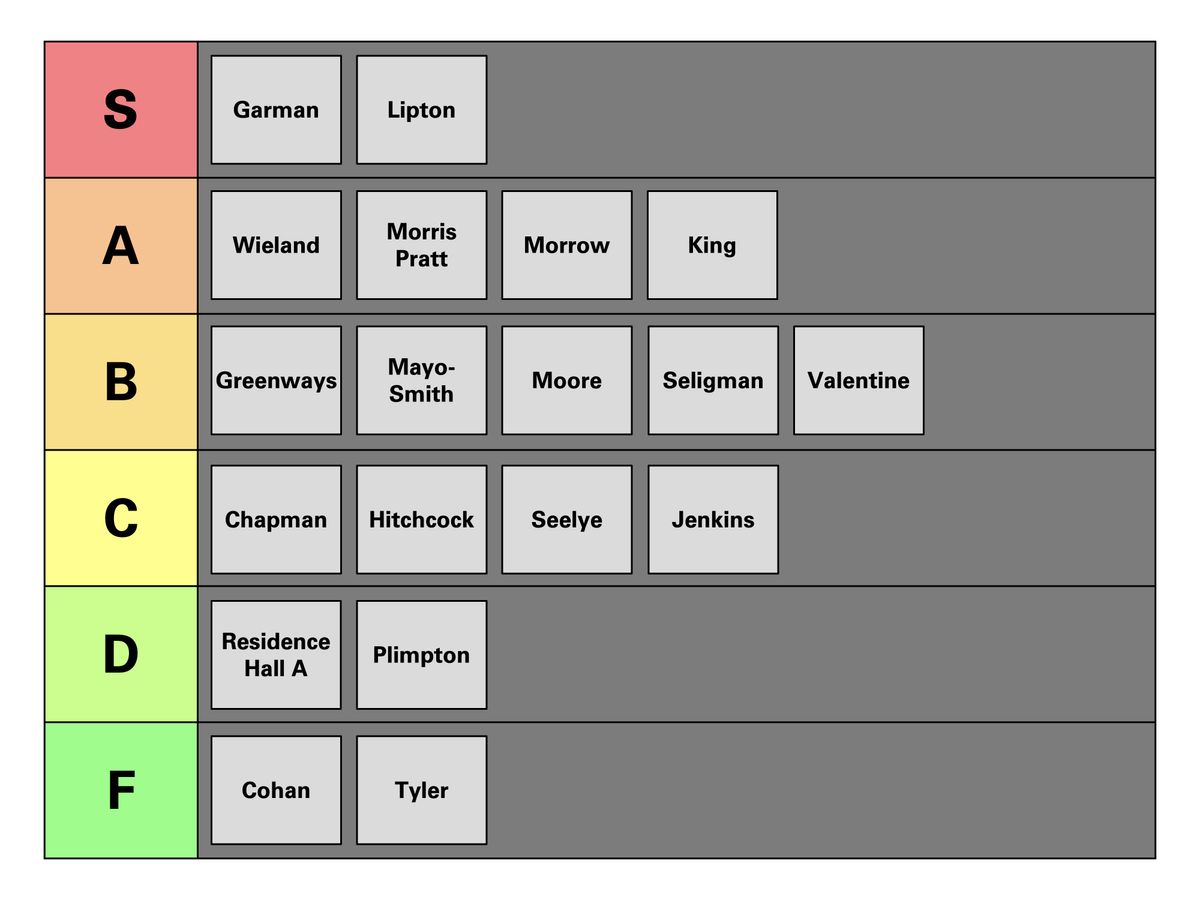Housing Selection Resurfaces Familiar Concerns
This year’s housing selection process, which began on April 11 and will run through April 13, resurfaced perennial concerns around securing a desirable living space. The Student spoke with members of the campus community to better understand the specific policies responsible for these uncertainties.

This year’s housing selection process, which began on April 11 and will run through April 13, resurfaced long-standing student concerns about the process. Students especially lamented the disparities between the quality of housing options and social difficulties created by the housing process.
The concerns come in the wake of last year’s housing selection process, which controversially ended the practice of “room groups,” meaning that students were no longer able to receive housing assignments alongside their friends. Separately, over 200 students that year were stranded on a waitlist, unable to receive an assignment until the summer, although Director of Housing and Operations Marie Lalor said that a waitlist of this size is not expected to recur this year.
More broadly, though, the selection process has been in flux since the pandemic upended the typical patterns of campus in 2020. Matt Vitelli ’24, who entered Amherst as a member of the class of 2023, said that the housing process had felt different every year he had been at the college.
“It’s just always confusing as to what’s going to happen next. Like, what can I expect for next year?” Vitelli said.
With regard to the housing process itself, many students cited concerns about the disparities between different housing options. Tyler Community Advisor Nick Torres ’25 pointed to maintenance issues, especially among the dorms on the hill.
“The facilities are definitely not equal. Tyler is just in disrepair. Our bathrooms are not appropriately sized,” Torres said.
George Blalock, the Community Development Coordinator for First Year Quad East, said that the location of the hill dorms can also contribute to student dissatisfaction. Dorms like Tyler, Plimpton, and Marsh, he said, are located in areas with poorer lighting than the rest of campus, along with occasionally treacherous conditions in winter when the hill becomes sleek with ice.
“[The Tyler hill environment] creates this habit or this routine, where you go to your room to sleep, you come out, go to class, and you go right back,” Blalock said. “You don’t really have a lot of incentive to engage with the campus, or you don’t really feel as a part of it as you should being a student who’s here, and I don't think that's something that can be solved within a year or two. I think that’s a long term planning process.”
However, concerns over housing extend beyond the hill dorms. Students also lamented the difficulty of being able to live alongside friends, especially with the loss of the option to select as a group beginning last year.
Luke Kline ’26 said that the selection process had created some difficulties for his social circle.
“In my friend group we have a bunch of different people who all would definitely be happy being roommates,” he said. “It’s definitely difficult, especially if there’s an odd number of people. I know that people were still stressing about finding roommates recently.”
Kline said that larger housing groups might fix some of these problems. “It would be nice to be on a floor with a lot of your friends,” he said. “Fewer people will be forced to room with somebody that they barely know at all.”
Gent Malushaga ’25 expressed his worry that a lack of control over particular campus spaces since the end of room groups has made it difficult for students to connect with both their living space and each other.
“If everyone who wanted to had their own space to do what they wanted with, people would have many more options socially,” Malushaga said.
Blalock echoed this sentiment, citing the Greenways as a space intended to be a social hub but that is not utilized as such. Blalock argues that instead of being a neutral meeting hub like Frost, the Greenways created an isolated separate community, one that is hard for others in the larger community to engage with.
One measure that could reduce the issues with housing, Torres said, is improved communication between the Office of Student Affairs (OSA) and students. “Everything needs to be more simple,” he added. “If OSA and the CDCs had an easier line of communication with each other, everything would be better.”
From Blalock’s perspective, a key issue is high staff turnover rate.
“Without the staff and retention needed, we kind of go backwards on any type of consistency that we do build up,” Blalock said. “I think the longest CDC here has been here for maybe three years now. That’s not even a full cohort of students.”
Despite the persistence of many housing problems, waitlisting issues appear to be lessening. Lalor, the director of housing and operations, projects that this year will see far fewer students relegated to the summer waitlist.
“Instead of seeing 209 students on the waitlist like last year, I am anticipating fewer than 75 this year,” Lalor said. “Unfortunately, there is a necessary waitlist every year following the Housing Selection Process and then, over the summer, many spaces become available or are reconfigured.”
Lalor explained further that waitlisted students should remain in communication with OSA, and stay vigilant so as to secure their spot.
“Processing room changes and swaps over the summer is a priority for us,” she said. “So, to all affected students, please check your email, complete the required forms, and keep in touch! We aim to enter the fall semester with as many students ‘settled in’ as possible.”
According to Blalock, reducing the issues with housing is in the interest of students and staff alike.
“At the end of the day, making students happy makes our jobs a little bit easier,” Blalock said. “Whatever makes students happy, we’re willing to do.”




Comments ()